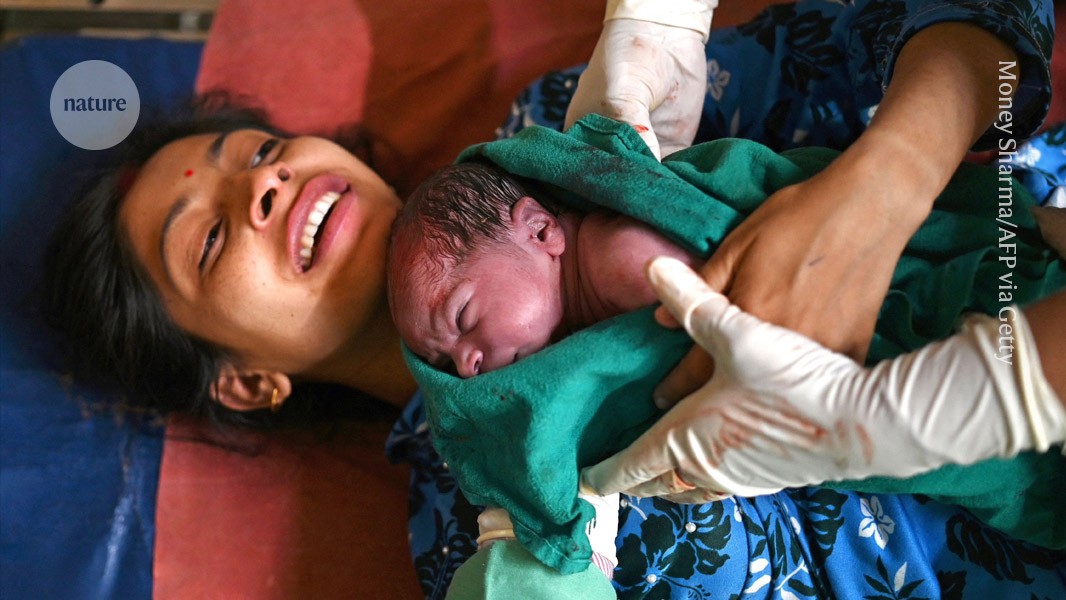Pregnancy’s true toll on the body: huge birth study paints most detailed picture yet

Data from 300,000 births reveal how essential biological measurements are altered by carrying and delivering a baby

Women’s bodies undergo a vast physiological changes during pregnancy that can last more than a year after birth.Credit: Money Sharma/AFP via Getty
Biologists have built one of the most detailed pictures ever of the changes that occur in women’s bodies before and after pregnancy, by pooling and studying around 44 million physiological measurements from more than 300,000 births.
The gigantic study1, which used the anonymized results of blood, urine and other tests taken before, during and more than a year after pregnancy, reveals the scale of the toll that carrying a baby and childbirth take on the body — from the myriad changes made to support a fetus to the effects of its abrupt departure from the body during birth. The research was published in Science Advances on 26 March.
The study suggests that the postnatal period in the body is much longer than people tend to assume, says Jennifer Hall, who researches reproductive health at University College London. There’s a societal expectation that you bounce back quickly after childbirth, she says. “This is like the biological proof that you don’t.”
The results also suggest that it might be possible to identify women at risk of certain common complications of pregnancy — including the blood-pressure condition pre-eclampsia and gestational diabetes — before conception. Currently, these conditions are diagnosed during pregnancy.
The power of data
The researchers used anonymized data from medical records supplied by Israel’s largest health-care provider, and spanning the period from 2003 to 2020. To build a picture of a typical pregnancy, they used test results only from women aged 20–35 who were not taking medication or experiencing chronic disease.

Source: Ref. 1
The team gathered results from 76 common tests — including measures of cholesterol, immune cells, red blood cells, inflammation and the health of the liver, kidneys and metabolism — taken up to 4.5 months before conception and up to 18.5 months after childbirth. This allowed them to establish average values for each test for every week in that period.
“It took my breath away to see that that every test has this dynamical profile that is so elaborate, week by week, and has never been seen before,” says Uri Alon, a systems biologist at the Weizmann Institute for Science in Rehovot, Israel, who led the study.
The researchers found that, in the first month after birth, 47% of the 76 indicators stabilized close to their pre-conception values. But 41% of the indicators took longer than 10 weeks to stabilize. These included several measures of liver function and cholesterol that took around six months to settle, and an indicator of bone and liver health, which took a year (see ‘The body’s slow recovery from childbirth’). The remaining 12% took 4–10 weeks to stabilize.
Several measurements — including a marker for inflammation and several indicators of blood health — settled but did not return to their pre-conception levels even after 80 weeks, when the study ended. Whether such long-lasting differences result from pregnancy and birth themselves or from behaviours changing after the arrival of a child is a question for future research, say the scientists.
Enjoying our latest content?
Login or create an account to continue
- Access the most recent journalism from Nature's award-winning team
- Explore the latest features & opinion covering groundbreaking research
or
Sign in or create an accountdoi: https://doi.org/10.1038/d41586-025-00959-7
This story originally appeared on: Nature - Author:Celeste Biever


















